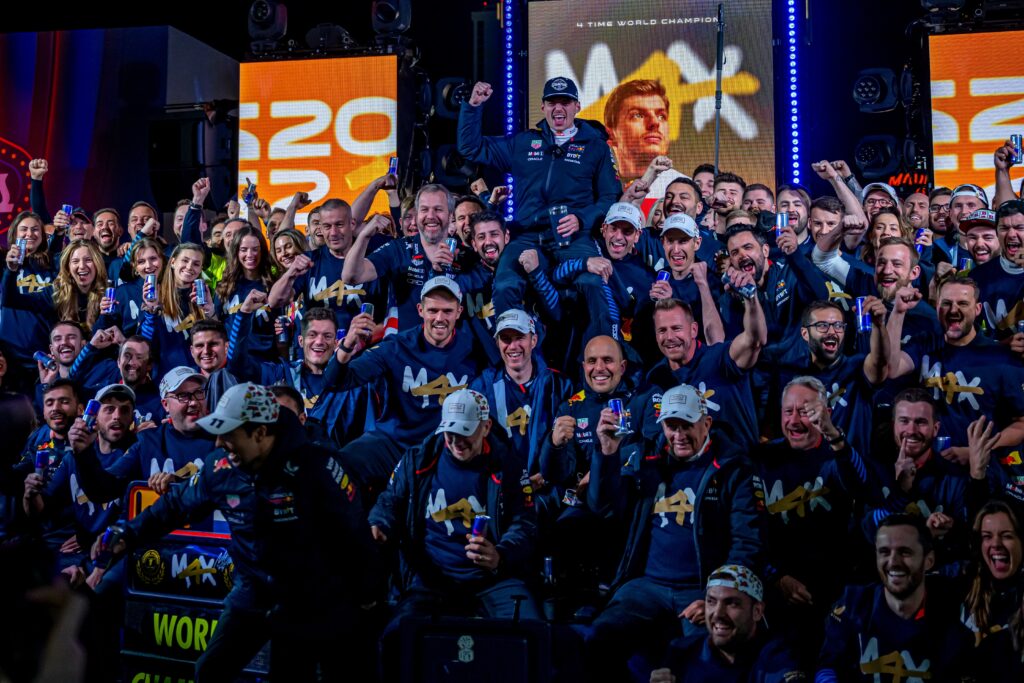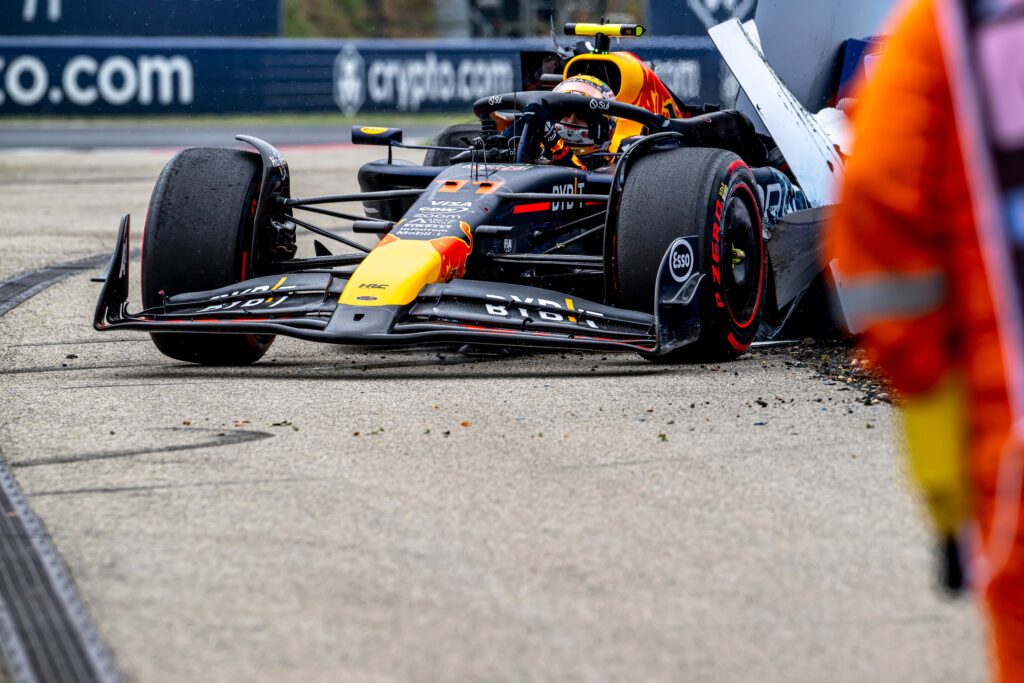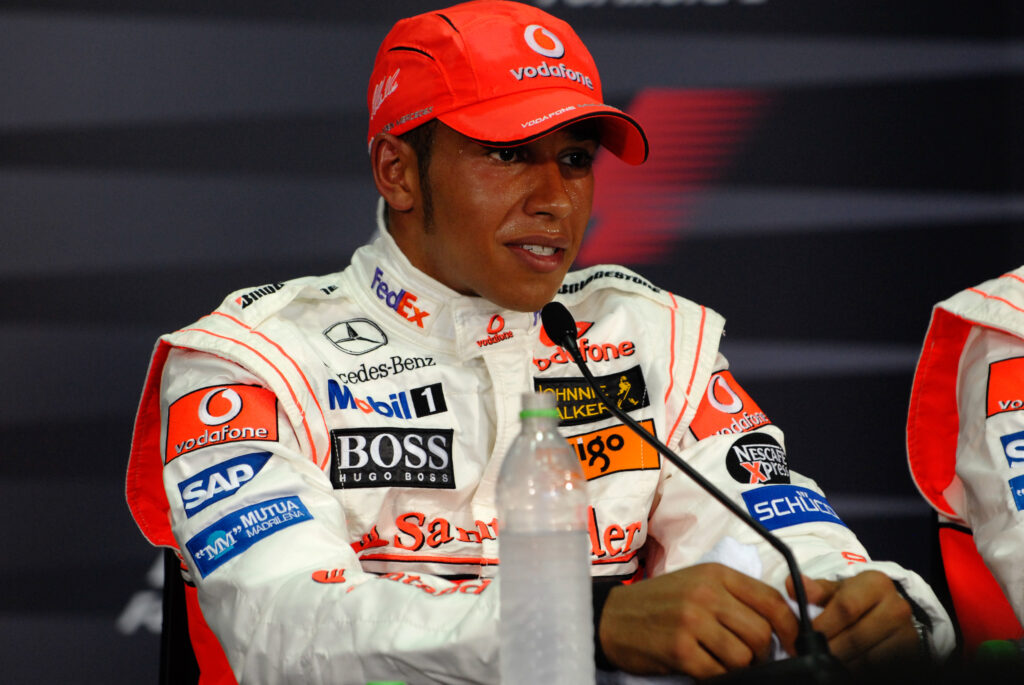Almost exactly one month ago, Max Verstappen raced down the iconic Las Vegas Strip in his Red Bull RB20 for the 50th and final time in the 2024 Las Vegas Grand Prix, 16 seconds adrift of race leader George Russell on his way to taking the chequered flag in fifth place.
It was a rather disappointing weekend for the 27-year-old Dutchman; he was not able to take the fight to Mercedes or Ferrari, and he was outqualified by Pierre Gasly, who was behind the wheel of an Alpine car that had, indeed, scored a double podium finish three weeks earlier, but had scored only 14 points in the 20 races prior. However, critically, he finished ahead of title rival Lando Norris and thus extended his lead in the drivers’ world championship standings to 61 points, becoming the sixth driver in F1’s history to have won four or more drivers’ world championships.
His triumph this season stands out from his previous title successes. Since Norris took his long-awaited first grand prix win in Miami — at the beginning of May, no less — Verstappen has scored only five victories, and the majority came on weekends on which he did not have the fastest car. In the same time frame, his teammate Sergio Perez, who Red Bull have announced will be replaced by 22-year-old Kiwi Liam Lawson in 2025, finished a best of sixth at the Dutch Grand Prix. That, reckons Diagonal Comms MD Matt Bishop, is what makes this season “Max’s best”, and has helped thrust him into his list of the greatest Formula 1 drivers of all time.

“It’s the first time he’s not had a car advantage,” Matt explains. “OK, he did have a car advantage at the beginning of the season. Of course, he made the most of it, as he always does. But then what happened was, certainly, the McLaren, sometimes the Ferrari, and sometimes the Mercedes, became faster than the Red Bull.
“Yet Verstappen managed to consistently score points and consistently bang podiums in and consistently even win races when he didn’t have the fastest car, which is the mark of a very special driver.
“Max is one of the greatest drivers we’ve ever seen in the history of the sport. I always used to say that there were three drivers that I couldn’t separate: Juan Manuel Fangio from the 1950s, Jim Clark from the 1960s, and Ayrton Senna from the 1980s and 1990s, the three greatest Formula One drivers of all time.
“But, then, because of his magnum opus, one has to add Lewis Hamilton, because of his seven world championships – some people say eight – and his 100-plus grand prix wins. And now, because of his magnum opus, I think you have to add Max Verstappen.”
While the RB20’s performance tapered, Norris emerged as a true contender for the drivers’ title, and a third consecutive constructors’ championship looked more and more unlikely… behind the scenes, Verstappen had to navigate a host of conflicts and changes.
In February, Red Bull team principal Christian Horner came under investigation after a complaint of inappropriate behaviour was made against him by a female colleague, although the allegations were dismissed in August. In May, arguably the greatest F1 car designer of all time Adrian Newey announced he would be leaving the Milton Keynes-based squad after 19 years. In August, sporting director Jonathan Wheatley revealed that he would depart to become the team principal of Audi, and Will Courtenay, Red Bull’s head of strategy, announced he would be vacating his role to become McLaren’s new sporting director. Internal turbulence would be an understatement – but Verstappen pushed through it.
Matt explains: “I thought the interesting thing was that, while the Red Bull team was if not imploding then certainly struggling – because that kind of disruption does have a very serious effect on any team – the gradual decline or deterioration that that upheaval caused, was slowed, certainly, and perhaps even prevented, by one man and one man alone, really.
“On one side of the garage, Checo’s side looked like a team that was in upheaval and decline. Max’s side of the garage looked like a team that was as determined to win as ever.”

Clearly, Verstappen has an extremely robust mentality. On track, he did not lose confidence in the same drastic manner as his teammate Perez did when the RB20 was not in an optimal operating window, and, in all of his public engagements, whether taking on the media, or other drivers such as Russell, whom he openly said he had “lost all respect for” after a post-qualifying clash in the stewards’ room in Qatar, he was not shy to speak his mind and did not appear especially phased by criticism, which notably spiked after a pair of incidents with Norris in Mexico.
One particular driver who comes to mind as having a similar approach to ignoring off-track noise is ‘The Ice Man’, Kimi Raikkonen, who famously took minimal interest in engaging the media or listening to what they had to say about him.
Again, Matt explains: “Kimi would say, ‘I genuinely don’t give a fuck what they write or say.’ And that would be true in his case. That would be 100 per cent true. But he’s probably the only one. Others say, ‘I don’t give a fuck,’ but they do. Straight after they have said that, you find them Googling themselves or typing their name into Twitter/X.
“Max, I think, is much closer to Kimi in that way. He still sometimes has a pop and says, ‘Some of these people are writing shit about me, some of the Brits are not positive about me, and some of the stuff that’s been written about me is wrong,’ but I think he says that just because he wants to get on the front foot and knock them down. I think it’s not because he’s genuinely agonising over it all. It’s not because he’s having sleepless nights. It’s not because he’s got a dull ache in the pit of his stomach about it.”
However, that approach has not been shared by every driver that has passed through the Formula 1 paddock over its 74-year history. In particular, Lewis Hamilton – who is one of four world champions with whom Matt has worked as a comms director, alongside Fernando Alonso, Sebastian Vettel, and Jenson Button – was more sensitive than Verstappen, certainly in his McLaren days at least.
“I think Lewis allowed the media to get to him in his early days,” says Matt. “He allowed what was appearing on social media to piss him off. He allowed a bad article, or a negative article in a newspaper or a website, to upset him. He allowed criticism from some TV commentators to get to him, too.”
As communications director at McLaren during Hamilton’s tenure, it was Matt’s ultimate responsibility to support him while forwarding the team’s commercial goals with a strategic and robust comms and PR approach, utilising his — and similarly his team-mates’ — immense marketing power, having carefully prepared him to approach his media engagements effectively.

Again, Matt explains: “One of the reasons why I’ve always liked to work closely with drivers is that it’s not just that I want them to get on the telly a lot, or be in the newspapers or websites a lot, it’s not because I want their mums to be happy that she’s read a nice piece about them in the paper.
“No, it’s because, yes, the team and its sponsors have a commercial imperative to get the right kind of coverage, and therefore we need to deploy drivers as the prime assets that the sponsors have bought into, and that the team has rights to as well, in order to tell that story to enable the sponsors to get the activation that they want and need. But I also put a lot of effort into briefing drivers, and part of the reason for that is so that they don’t say the wrong thing in the first place.
“You don’t want them to become robots, you absolutely don’t. You want them to be themselves. But also you don’t want them to say things that will drop them in it. Not just because it’s a headache for the team, and particularly for the comms guys, and a commercial negative too, but also because the drivers worry about these things. Lewis certainly used to.”
Suppose a driver is distracted by noise in the media and is not confident in the comms and PR strategy behind him or her, Matt explains that their attention cannot, and will not, be focused on what matters most and where success is ultimately rooted: on-track performance.
“When a driver is in an engineering meeting talking to the engineers and they’re saying, ‘We seem to be having excessive understeer in turns five, seven, and nine, let’s look at why,’ they need, and the driver needs, to be able to focus 100 per cent on that problem because it’s not just what you do in the cockpit that matters. It’s what you do outside the cockpit in order to make your car go as fast as it possibly can: that matters just as much. And if you’re distracted because you’re worried about something that was written in the paper, or something that was said on TV, or something that was tweeted, and therefore you’re not properly listening, there’s a lap time deficit in that problem.
“So getting a robust comms solution and operation that engage the drivers in order that they don’t make mistakes of that nature, there’s actual lap time in that. Honestly, there’s actual lap time in that.”
Drawing on our decades of experience in all facets of the motorsport and automotive industries, we at Diagonal Comms offer comprehensive comms/PR support, to racing drivers and all who work with them, including strategic communications, media training, reputation management, brand building, and more.







